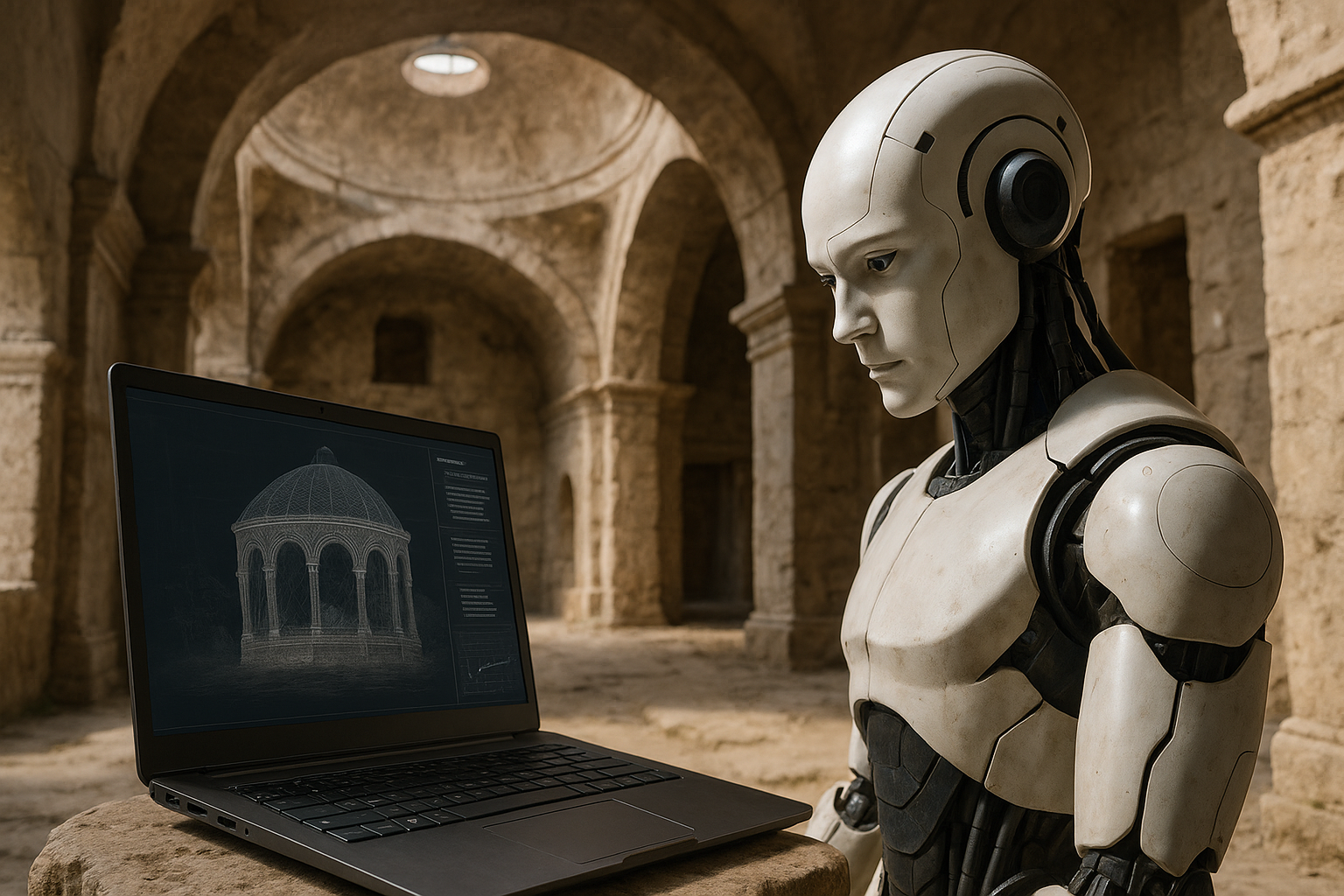How AI can think, remember and act to protect cultural heritage assets
Conventional technologies used in cultural heritage preservation typically operate as static monitoring tools or repositories of data. They lack the temporal and cognitive mechanisms to evaluate risk evolution, justify decisions, or plan preventive strategies over extended periods. The study confronts this gap by proposing a model of AI that is agentic, that is, equipped with the capacity to remember, reason, and act autonomously.

While cultural heritage faces mounting threats from climate change, conflict, and neglect, efforts to digitally safeguard these assets remain slow and fragmented. Amid these developments, a new study introduces an innovative model that could transform heritage conservation.
Published in Computers, the study titled “Agentic AI for Cultural Heritage: Embedding Risk Memory in Semantic Digital Twins,” the study introduces a semantic framework that fuses the established ICCROM/CCI ABC method for risk assessment with a domain-specific ontology called Panoptes. This fusion gives rise to memory-enabled digital agents capable of supporting long-term, transparent, and context-aware cultural heritage preservation.
How can AI go beyond automation to protect cultural assets?
Conventional technologies used in cultural heritage preservation typically operate as static monitoring tools or repositories of data. They lack the temporal and cognitive mechanisms to evaluate risk evolution, justify decisions, or plan preventive strategies over extended periods. The study confronts this gap by proposing a model of AI that is agentic, that is, equipped with the capacity to remember, reason, and act autonomously.
The framework works on a concept called risk memory. Rather than treating threats as isolated data points, the proposed system encodes them within a structured memory layer that preserves context, timing, and impact severity. This allows the AI to recall past conditions, observe trends, and draw inferences based on previous outcomes. The result is an intelligent system that understands not only the present state of an asset but its vulnerability history and the trajectory of potential degradation.
This agentic approach is designed to support proactive risk mitigation. For example, the system can simulate future threat scenarios, determine which assets are most exposed, and propose interventions based on accumulated evidence. Unlike conventional tools that react to real-time triggers, this AI model anticipates risk and offers a rationale for prioritizing specific conservation strategies.
What makes the ICCROM/CCI ABC method suitable for AI integration?
The study integrates the ICCROM/CCI ABC method, an internationally recognized approach to assessing risks to cultural heritage, into the AI’s semantic reasoning process. This method categorizes risks based on frequency, severity, and extent of impact, making it especially suitable for structuring memory layers in intelligent systems.
By embedding this method into the Panoptes ontology, the AI acquires the ability to evaluate threats according to established cultural policy frameworks. The Panoptes ontology offers a formal vocabulary and structure for describing heritage-related concepts, risks, and decision pathways. This semantic backbone ensures that the AI’s decisions are explainable, reproducible, and aligned with cultural values and institutional norms.
The inclusion of the ABC method also ensures that the AI’s reasoning is not arbitrary but traceable to globally accepted criteria. This traceability enhances trust in automated systems among curators, conservators, and heritage policymakers who must justify and document every decision related to asset preservation. It also opens the door to future regulatory compliance and integration into public-sector governance systems.
Furthermore, the framework’s semantic model allows for scenario-based simulations. AI agents can evaluate how risks develop over time and respond according to evolving priorities. This makes the system particularly valuable in cases of cumulative deterioration, seasonal threats, or emerging hazards due to climate change, urban development, or political instability.
How can agentic AI shape the future of cultural heritage management?
Cultural heritage institutions often struggle with limited resources, competing priorities, and uncertain environmental pressures. Agentic AI systems can provide decision support by ranking preservation actions based on historical data, simulating future degradation, and evaluating the outcomes of past interventions.
By maintaining a dynamic memory of risk, the AI can tailor its responses to local, regional, or global policy shifts. It can also reconcile conflicting priorities by referencing cultural significance, vulnerability, and previously observed patterns of neglect or damage. This contributes to the emergence of systems that do not merely execute commands but participate meaningfully in governance processes.
In practice, such AI could be embedded within digital twins that monitor conditions, alert stakeholders, and update their knowledge base in real time. These digital twins would not only reflect the current state of an asset but anticipate its future under various risk conditions. This allows for strategic planning that moves beyond preservation as a static goal and toward active stewardship grounded in intelligence and foresight.
The research also contributes to broader AI discourse by advancing the notion of explainability. By grounding every decision in a semantic structure and a recognized risk model, the agent’s reasoning becomes transparent. This mitigates the risks associated with opaque algorithmic systems, particularly in sensitive domains like cultural heritage, where human values, history, and identity are at stake.
- FIRST PUBLISHED IN:
- Devdiscourse










